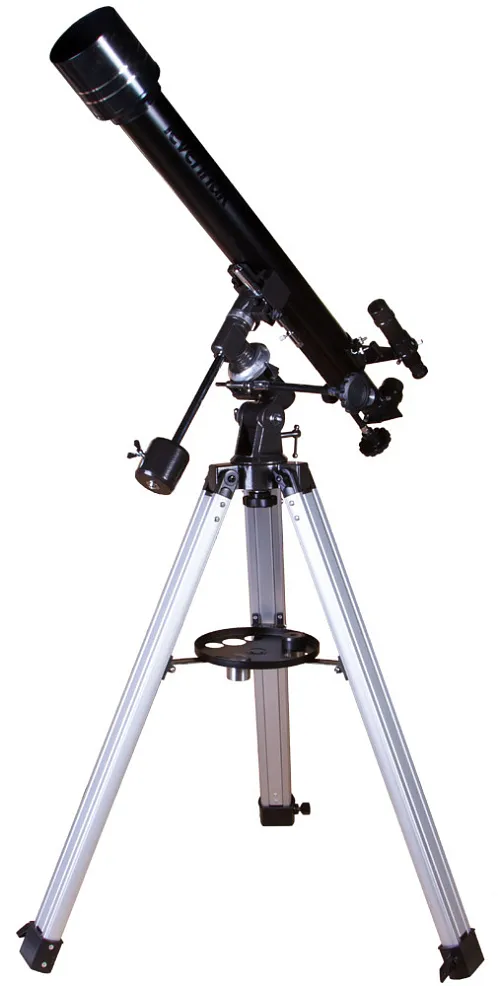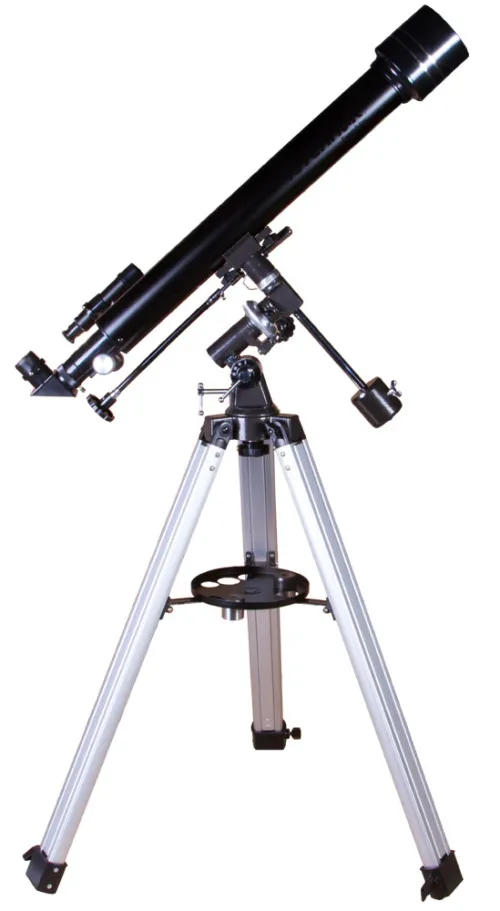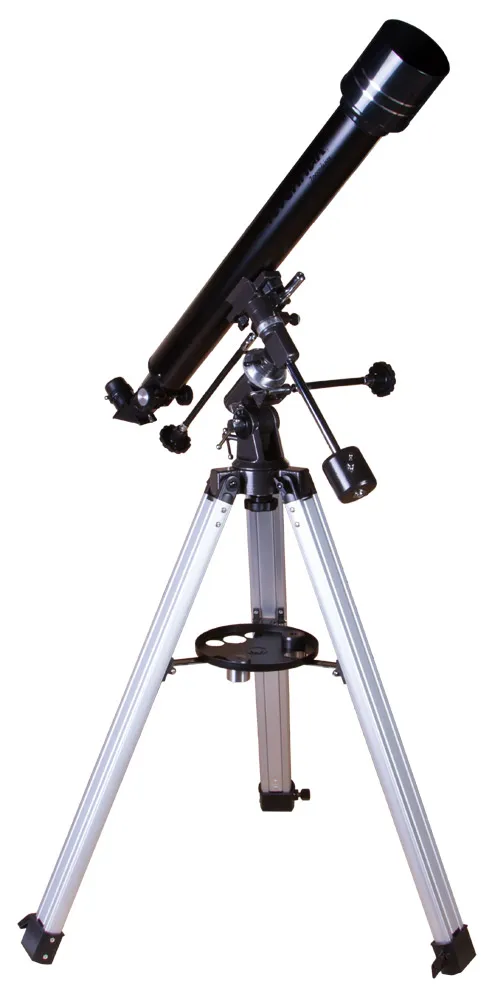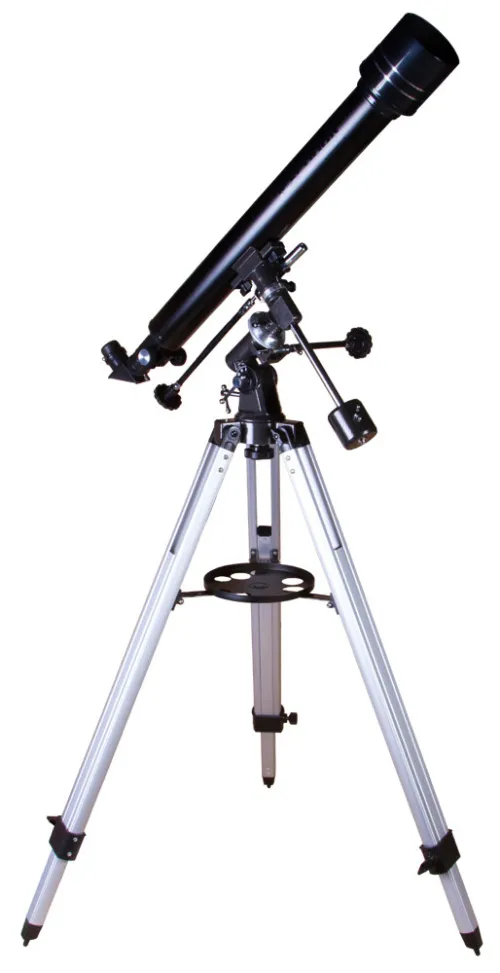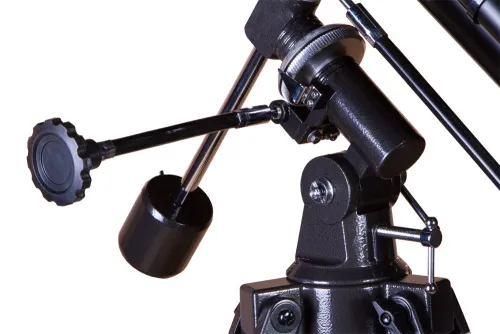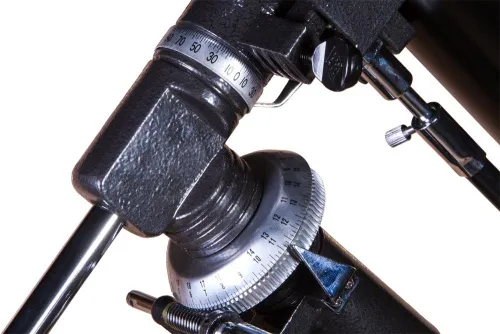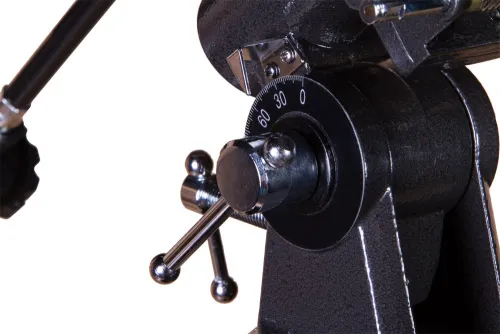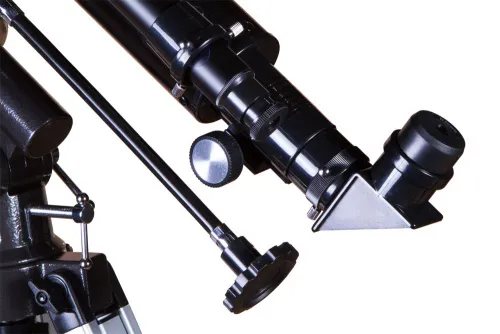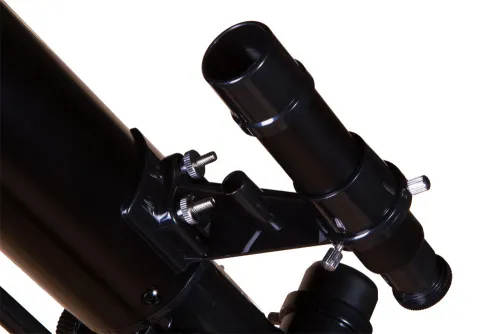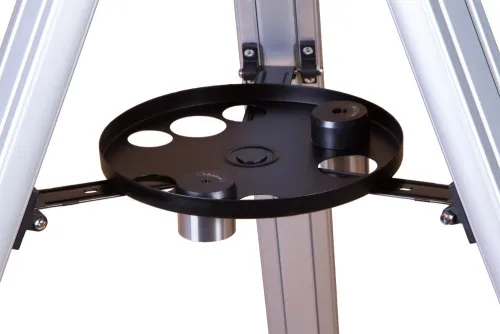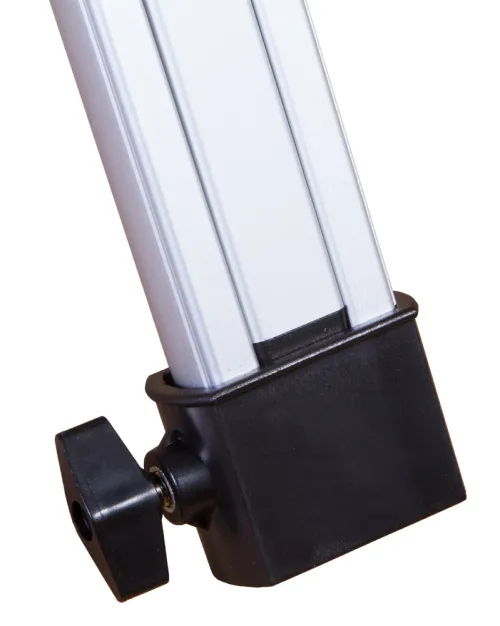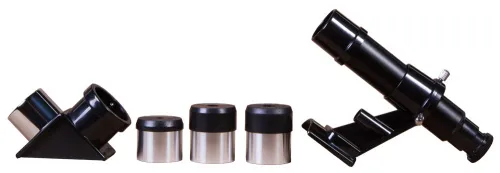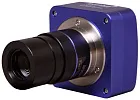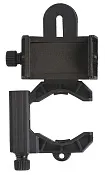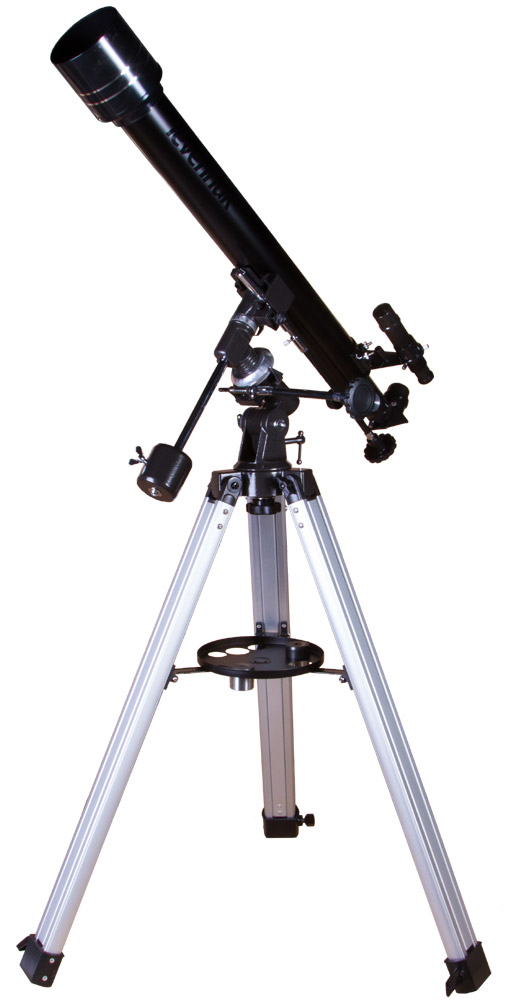Levenhuk Skyline PLUS 60T Telescope
Refractor. Aperture: 60mm. Focal length: 700mm
| Product ID | 72853 |
| Brand | Levenhuk, Inc., USA |
| Warranty | lifetime |
| EAN | 5905555002187 |
| Package size (LxWxH) | 100x28x19 cm |
| Shipping Weight | 6.85 kg |
Levenhuk Skyline PLUS 60T Telescope is a classic refractor on an equatorial mount. It is excellent for exploring outer space, observing terrestrial planets, and lunar craters. You can observe Saturn, Jupiter, Venus, and Mercury through it. Due to its ability to precisely track celestial objects on the starry sky, the telescope is excellent for lengthy observations. Levenhuk Skyline PLUS 60T Telescope is excellent for astrophotography with a camera (purchased separately).
This telescope uses fully coated glass lenses. The optics create a sharp, detailed, and clear image and impress with a detailed picture at ultimate magnifications. The kit includes three eyepieces, that can be interchanged in order to achieve the desired magnification for observing different space objects. A diagonal mirror included in the kit is essential for examining terrestrial objects. Levenhuk Skyline PLUS 60T transmits an image flipped upside down. Use a diagonal mirror to correct that for comfortable terrestrial observations.
The optical tube is mounted on an equatorial mount operated with slow motion control knobs. It will take some time to learn how to control the mount, but it is more useful and simpler to track the celestial objects than an alt-azimuth mount. A 5x optical finderscope helps tracking the objects in the starry sky.
An aluminum tripod with an accessory tray is stable and reliable. The tripod stands steadily even on a rough surface; you can easily adjust it to your height due to adjustable legs.
Features:
- Classic refractor with the coated glass optics
- Equatorial mount makes tracking celestial objects easier
- Sturdy aluminum mount with an accessory tray
- An excellent choice for lunar, planetary, and terrestrial observations
- The kit includes three eyepieces and a diagonal mirror
The kit includes:
- Telescope optical tube
- Equatorial mount
- Aluminum tripod with an accessory tray
- 5x24 optical finderscope
- SR4mm (175x) eyepiece
- H12.5mm (56x) eyepiece
- H20mm (35x) eyepiece
- Diagonal mirror
- Slow-motion control knobs
- Counterweight
- User manual and lifetime warranty
| Product ID | 72853 |
| Brand | Levenhuk, Inc., USA |
| Warranty | lifetime |
| EAN | 5905555002187 |
| Package size (LxWxH) | 100x28x19 cm |
| Shipping Weight | 6.85 kg |
| Optical design | refractor |
| Optics material | optical glass |
| Optics coating | standard |
| Objective lens diameter (aperture), mm | 60 |
| Focal length, mm | 700 |
| Highest practical power, x | 120 |
| Aperture ratio | f/11.6 |
| Limiting stellar magnitude | 11.4 |
| Eyepieces | H12.5mm (56х), H20mm (35х), SR4mm (175х) |
| Eyepiece barrel diameter, in | 1.25 |
| Finderscope | optical, 5x24 |
| Tripod | aluminum |
| Tripod height (adjustable), mm | adjustable |
| Accessory tray | ✓ |
| Telescope control | manual |
| Mount | equatorial, EQ1 |
| Counterweights | yes |
| Optical tube material | aluminum |
| User level | beginners |
| Assembly and installation difficulty level | complicated |
| Observed object | planets of the Solar System, terrestrial objects |
Convenient diagrams that describe how to install additional accessories on refractors and catadioptric telescopes
Find out how to assemble a telescope on an example of the Levenhuk Skyline 90x900 EQ telescope
This short guide will help you avoid typical mistakes and learn more about telescope and mounting types
The basics of astronomical observations for beginners
In this article we have gathered answers to some of the most frequently asked questions about telescopes
The most interesting celestial objects you can observe with Levenhuk telescopes
How telescopes work?
You can actually perform observations from your balcony!
All about telescope sizes, types, magnification, and mounts
Learn how to set up and use the telescope properly
Astronomy in light-polluted skies. Find out what you can observe in the city
Read an interesting comprehensive article on telescopes for little astronomers
The pictures are made with Levenhuk telescopes
Celestial objects you can observe with telescopes of different apertures
Colored and vivid images of galaxies, planets and star clusters entrance everyone who is fascinated by boundless space
Find an interesting review on the history of the changes to a refracting telescope
To make the process of choosing a telescope easier, we will tell you about the characteristics of the most popular types of telescopes today
Learn everything you need to know about refractor telescopes to make the right choice

